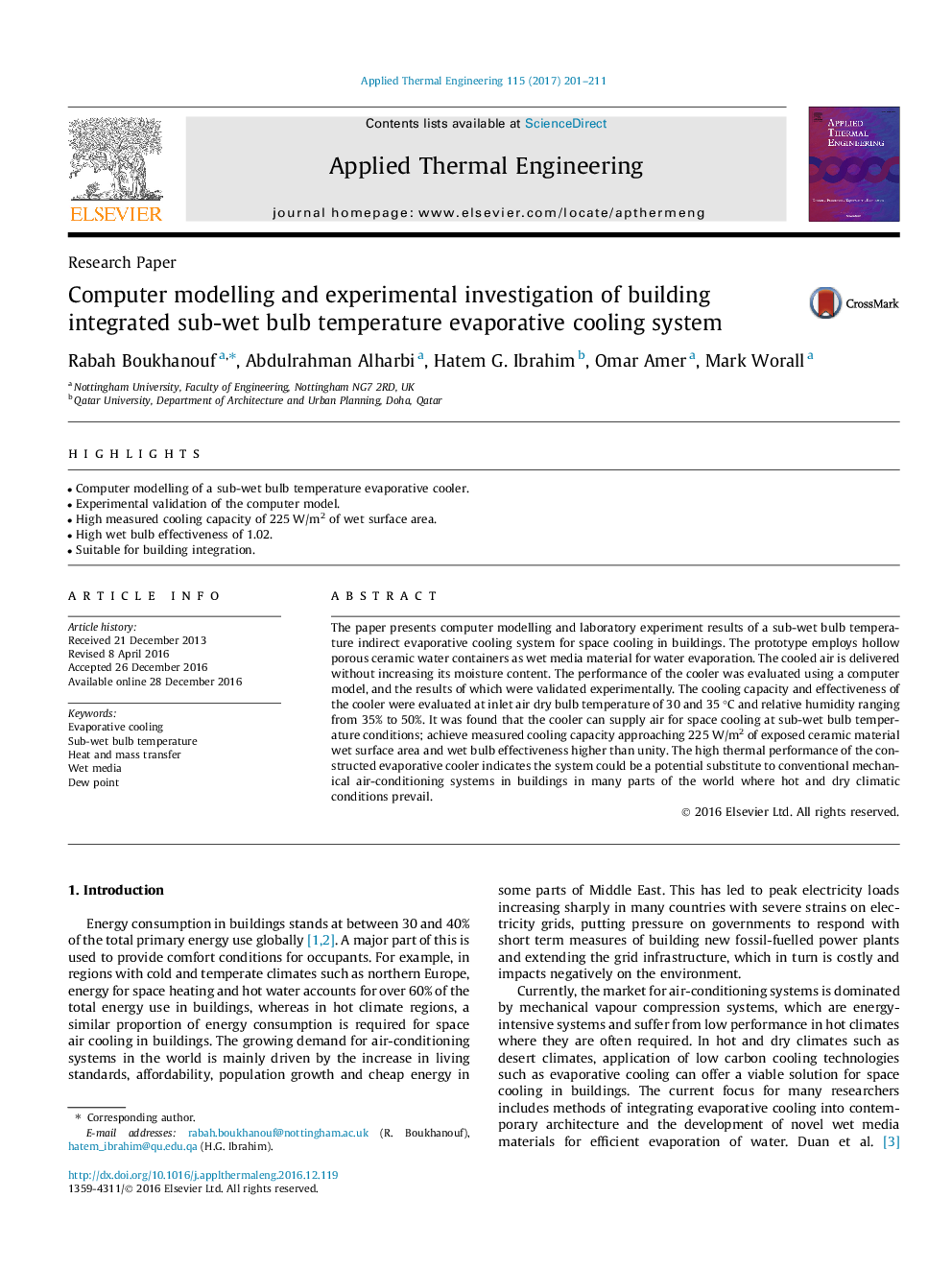| Article ID | Journal | Published Year | Pages | File Type |
|---|---|---|---|---|
| 4991595 | Applied Thermal Engineering | 2017 | 11 Pages |
Abstract
The paper presents computer modelling and laboratory experiment results of a sub-wet bulb temperature indirect evaporative cooling system for space cooling in buildings. The prototype employs hollow porous ceramic water containers as wet media material for water evaporation. The cooled air is delivered without increasing its moisture content. The performance of the cooler was evaluated using a computer model, and the results of which were validated experimentally. The cooling capacity and effectiveness of the cooler were evaluated at inlet air dry bulb temperature of 30 and 35 °C and relative humidity ranging from 35% to 50%. It was found that the cooler can supply air for space cooling at sub-wet bulb temperature conditions; achieve measured cooling capacity approaching 225 W/m2 of exposed ceramic material wet surface area and wet bulb effectiveness higher than unity. The high thermal performance of the constructed evaporative cooler indicates the system could be a potential substitute to conventional mechanical air-conditioning systems in buildings in many parts of the world where hot and dry climatic conditions prevail.
Related Topics
Physical Sciences and Engineering
Chemical Engineering
Fluid Flow and Transfer Processes
Authors
Rabah Boukhanouf, Abdulrahman Alharbi, Hatem G. Ibrahim, Omar Amer, Mark Worall,
